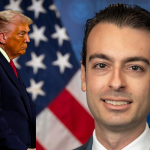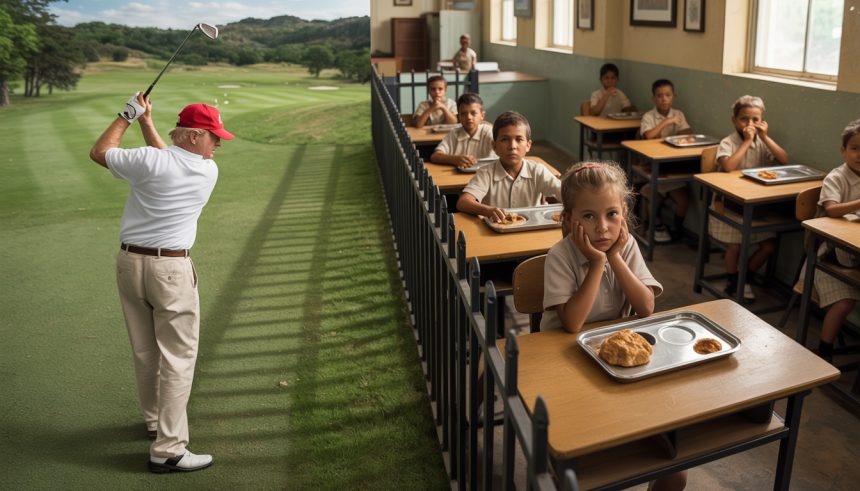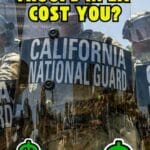Since President Donald Trump began his second term in January 2025, taxpayers have spent approximately $52 million to cover his golf-related travel and security costs. To put that in perspective, those same funds could have paid for 17,391,304 school lunches across the United States — a figure that highlights the ongoing debate over government spending priorities and presidential leisure activities.
The estimated cost stems from travel, lodging, and security expenses linked to multiple golf outings at Trump-owned resorts in Florida, New Jersey, and Virginia. While every president incurs travel and security costs, the frequency of Trump’s weekend trips has drawn renewed scrutiny as inflation and school meal funding remain pressing national issues.
How the $52 Million Adds Up
Each presidential golf visit typically costs taxpayers between $500,000 and $3 million, depending on destination and security requirements. Since January, President Trump has reportedly played golf at least 25 times, leading experts to estimate the total $52 million figure.
To illustrate the opportunity cost:
- The average federally reimbursed school lunch costs roughly $3.
- At that rate, $52 million could purchase 17,391,304 lunches.
- That’s enough to feed every student in a mid-sized state like Virginia for weeks.
Critics argue that while recreation is a legitimate part of any president’s schedule, optics matter — particularly when millions of American children face food insecurity.
Calls for Accountability and Perspective
Supporters of President Trump defend the spending, noting that presidential travel costs are unavoidable, regardless of who’s in office. They emphasize the importance of balancing presidential duties with moments of rest and recreation to maintain focus and performance.
However, watchdog organizations and education advocates say the optics are difficult to ignore. “It’s not just about golf; it’s about priorities,” said one policy analyst. “Every dollar represents a choice — and right now, millions of kids rely on free or reduced-price lunches just to get by.”
The White House has not commented directly on the cost comparison but emphasized that President Trump continues to donate his annual salary to various federal programs, maintaining his long-standing pledge from his first term.
The Broader Issue of Food Insecurity
Food insecurity remains one of America’s most persistent social challenges. According to the USDA, more than 12 million children live in households experiencing food hardship. For many, the school lunch program is not just a supplement — it’s an essential lifeline.
Educators and nutrition advocates argue that more investment in meal programs could yield societal benefits far greater than the cost. Studies show students who receive regular, healthy meals perform better academically, have improved attendance, and are more engaged in class.
Some lawmakers have suggested redirecting equivalent presidential travel funds toward expanding the National School Lunch Program (NSLP), which serves nearly 30 million students daily. A bipartisan proposal introduced earlier this year aims to extend access to all public school students, regardless of income.
Public Reaction and Political Ramifications
Public opinion has been mixed. For Trump supporters, the golf trips symbolize business networking and high-level engagement away from Washington’s rigid structure. For opponents, they reinforce a narrative of misplaced priorities.
Social media discussions have amplified the contrast — photos of Trump on the golf course juxtaposed with cafeterias struggling to provide affordable meals. Advocacy groups have turned the $52 million figure into a rallying cry for federal funding reform.
Still, the administration maintains that presidential travel is part of the job’s cost and that focusing on the president’s golf outings misses the broader picture of policy accomplishments in trade, energy, and border security.
As the debate continues, the $52 million figure remains a powerful symbol of the trade-offs inherent in government spending decisions. Whether viewed as excessive or routine, it underscores the nation’s constant tension between leadership optics and fiscal responsibility.
Sources












